
Since we just got back from a vacation in Maine, we thought we’d try a dish associated with the Pine Tree State. This is a nice recipe for pickles, especially since it avoids all the downsides of making pickles; you know, the boiling vinegar, the canning jars, the steam from the canning kettle — thinking about all that makes you just want to buy pickles at the store, right? Wrong! As you’ll see.
This recipe was on the back page of the newsletter that we pick up at the CSA each week along with our produce. The front page has a bit of news about the farm, or our rancher, or information about a crop we’re getting in that week’s share, and the back usually includes some recipes that are appropriate for that week’s produce. The week we received pickling cucumbers, there was a recipe for Old Fashion Maine Mustard Pickles on the back. Looking it over, we noted that we had everything except the dry mustard, but we did have mustard seed. While we could’ve ground them into powder, we thought we’d just leave ’em whole. A nice thing about this recipe is that it’s easy to scale up or down, depending on how many cucumbers you have, and how many pickles you want to make. Since only one of us really enjoys pickles, we decided to make a single pint jar. So, let’s scratch up some pickles.
Old Fashion Maine Mustard Pickles
Ingredients
- 2 pickling cucumbers
- 1 heaping Tbs sugar
- 1/2 heaping Tbs yellow mustard seed
- 1/2 heaping Tbs kosher salt
- Vinegar
- Water
Instructions
- Wash and cut cucumbers into desired shapes (spears, slices).
- Place in jar and add dry ingredients.
- Fill jar 2/3 full of vinegar and add cold water to cover cucumbers.
- Cover and shake.
- Place in a conspicuous location for 24 hours and shake jar every time you pass by.
- Refrigerate.
Ingredient discussion:
Use either white vinegar or apple cider vinegar with 5% acidity. The acidity of the vinegar is what keeps the cucumbers from spoiling, so you don’t want to change it willy-nilly. Use kosher or pickling salt, as these are only salt; no iodine or anti-caking agents, which can make your pickles cloudy or soft.
Procedure:
Wash and cut cucumbers. Select only firm cucumbers, and wash them well to the point that, if you got them at the store, you might want to place them in a colander and pour boiling water over the top to remove any applied wax. We went with the traditional spears.
Pack jar. Don’t pack them in too tightly; you’ll be adding other ingredients in just a bit, so you need some space. And, if need be, trim back your spears so that you’ll have no problem covering them with liquid, and still be able to give the jar a vigorous shake. For only a pint, you might have some cucumber left over. Put it to good use. Or make another jar.
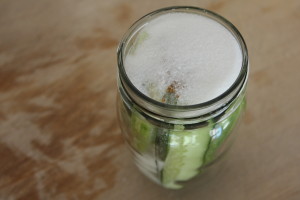
Add dry ingredients. Just measure directly into the jar. Since you’ll be shaking the jar in a bit, it isn’t going to matter which goes in first.
Add vinegar and water. Pour in vinegar until the jar is 2/3 full, then fill the rest of the way with water.
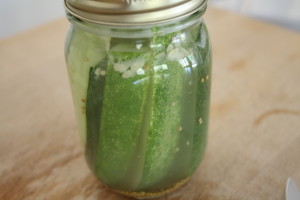
Shake and infuse. Cover the jar and give it a good shaking to dissolve the salt and sugar. Now, set it in a very conspicuous place. We set ours on the cutting board right at the end of the counter. For the next 24 hours, every time you walk by the jar, pick it up and give it a good shaking.
Refrigerate. After 24 hours, your pickles are done; place them in the refrigerator to chill, and test them out.
That’s really simple, isn’t it? It makes you wonder why people would bother to buy pickles, or at least it makes us wonder. After all, using this, or the super easy microwave pickles, you can pretty much have pickles anytime you have cucumbers, with no added colors or chemicals that you don’t understand — just pure pickle goodness. Overall, these pickles are pretty good — spicy with a sweet aftertaste — especially when you consider how little effort they take. Four stars.
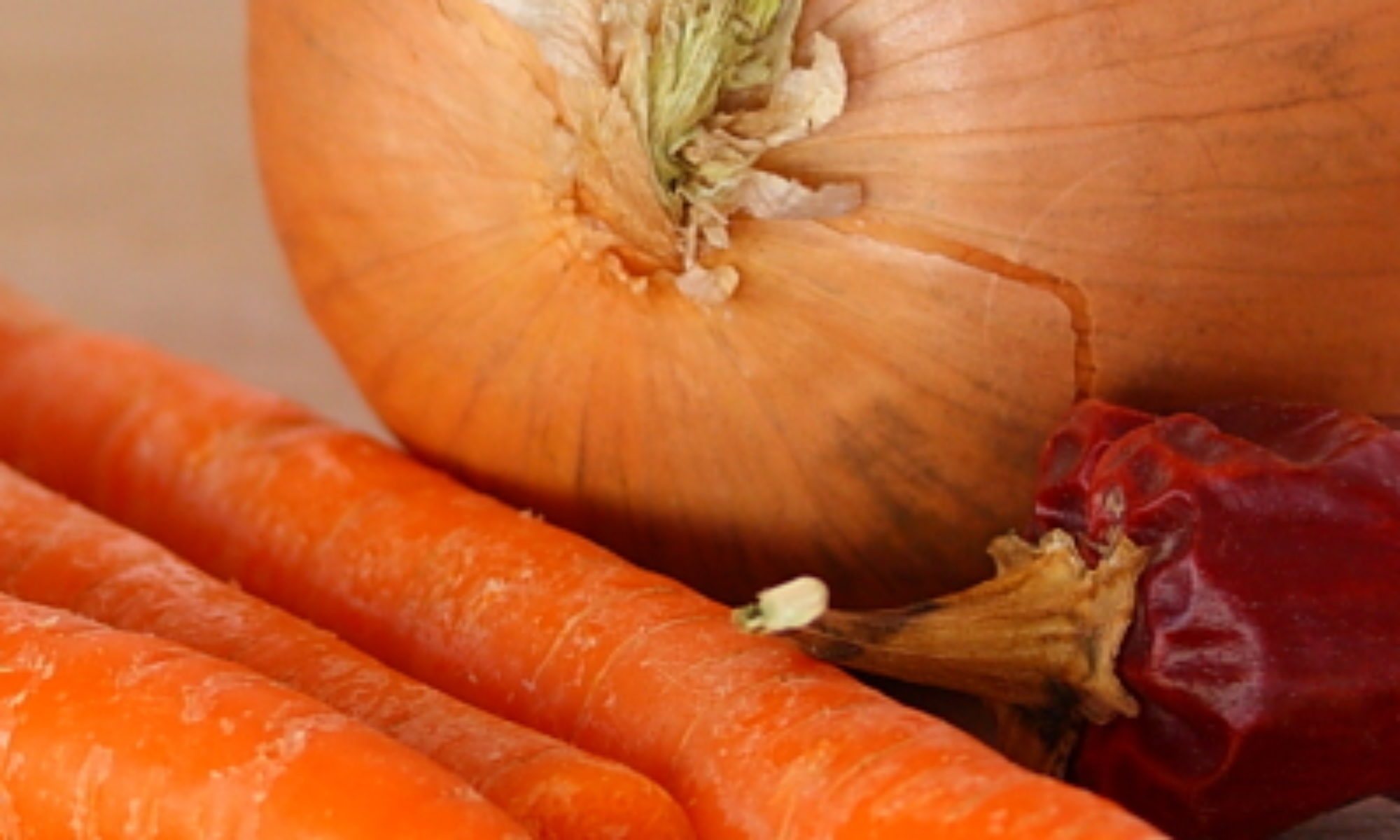
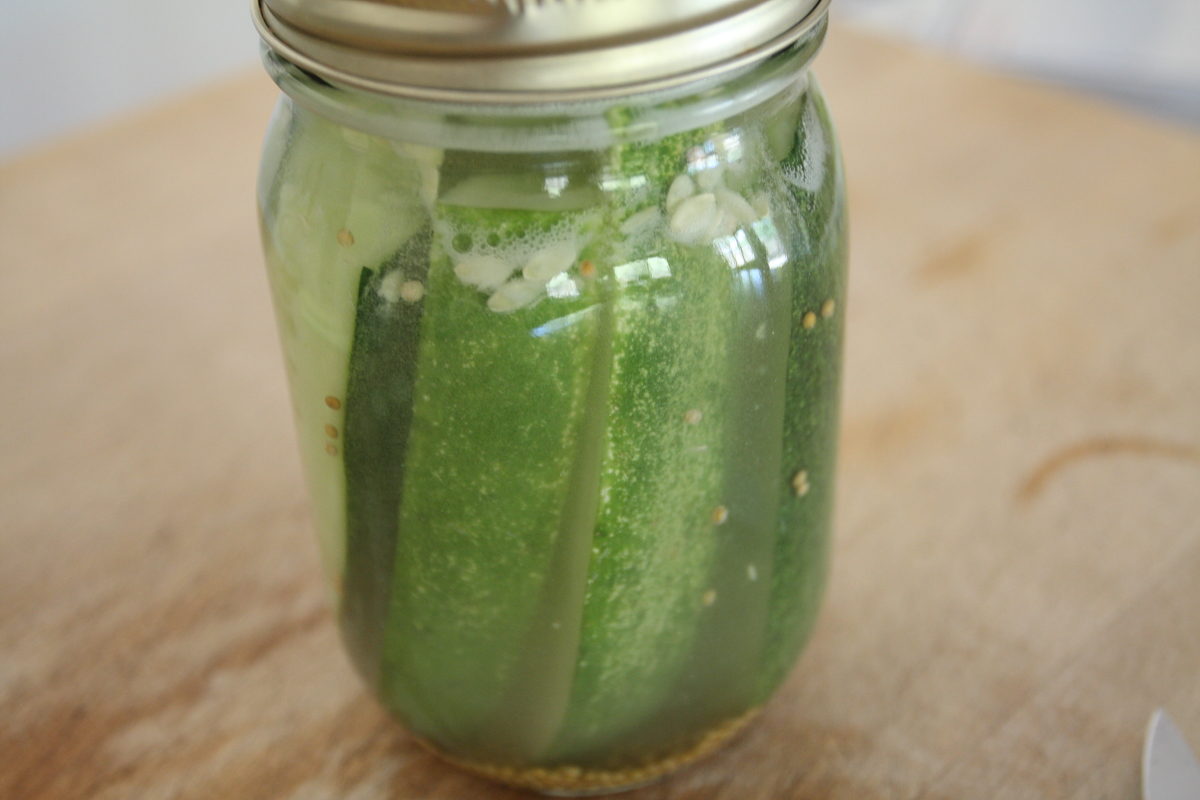
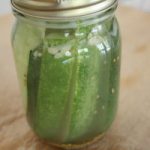


They fa-got the sliv-ahs of gah-lic!
In 1962 my uncle Tom Gillant (mexico, me.) told me his mustard pickle recipe… I was 6 at the time. So yes, it is an old Maine recipe. He did can them, need to wait 6 weeks for the mustard to set; sug-ah optional.
There is no doubt that garlic would go nicely in these pickles — good suggestion. But, we think that the best part about them (with or without the garlic) is that they are so easy to make. And you can make just a small batch: which is perfect for just the two of us.
Thanks,
Shawn
If we’d like to stick with the original recipe and use mustard powder instead of the mustard seed are the amounts the same that you used or is it a different measurement? Can these be canned or would this somehow destroy something about the pickles?
Realize that if you use mustard powder you’ll have a cloudy brine which may be unappealing. I’d probably suggest either leaving out the mustard seeds or replacing them with something you do have, perhaps 1/2 tsp celery seeds, or a few allspice berries, or half a dozen cloves, or 1 or 2 bay leaves.
As far as canning, I *believe* it would be okay with the amount of vinegar in the recipe, but the pickles would probably be softened by the canning process. If you are planning on canning pickles, I would really try to find a recipe specifically for canning pickles for safety reasons. Such a recipe will ensure there is enough acidity to prevent botulism or other problems. You can never be too safe when putting up food.
Shawn
Thank you for sharing this! I lived in Maine for 20 years but have since lost the recipe & was very happy to see it here!
I’m glad this post was helpful.
All the best,
Shawn
Can I reuse the brine to make another new batch of pickles?
I probably wouldn’t because some of the salt is absorbed by the pickles, so the brine is less salty, and the salt is what prevents spoilage. So I think you might end up with moldy pickles (or worse).
All the best,
Shawn
Looking forward to try this! Thank you!
What do you think about a little larger jar and tossing in some cauliflower florets and a few peeled pearl or cippolini onions?
I always enjoyed those other pickled veggies.
Since these pickles are naturally fermented by bacteria and microbes, I would check to see if any vegetables you add would interfere with the fermentation. I don’t think cauliflower would, as it is just a variety of cabbage and cabbage ferments very well, but I seem to recall that some alliums (onions, garlic, etc) do have antimicrobial properties. A good place to start would be to look in The Art of Fermentation by Sandor Katz, which you can probably borrow through your local library. I did.
All the best,
Shawn
Good tips and thanks for heads up about the book, Shawn
Just made a jar for me and my hubby! The preparation for these pickles is so simple! Can’t wait to try them!
Thank you!
You are welcome and I hope you enjoy them.
All the best,
Shawn